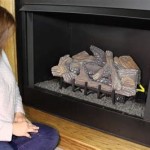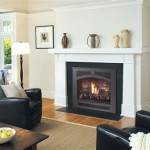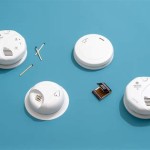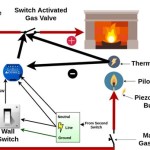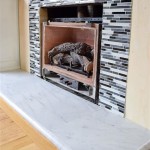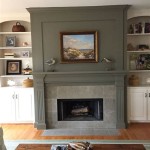Building a TV Cabinet Above a Fireplace: A Comprehensive Guide
Integrating a television into a living space often presents a design challenge, particularly when a fireplace is a focal point. Mounting a television above a fireplace is a common solution, but concealing the television components and creating a cohesive aesthetic requires careful planning and execution. Building a custom TV cabinet above the fireplace can provide a functional and visually appealing solution, seamlessly blending technology with the existing architecture. This article will provide a detailed guide to building a TV cabinet above a fireplace, covering key considerations, design principles, construction techniques, and safety guidelines.
Key Considerations Before Construction
Before embarking on the construction of a TV cabinet above a fireplace, several crucial factors must be evaluated. These considerations will dictate the design, materials, and ultimately, the success of the project.
Heat Management: The primary concern is the heat generated by the fireplace. Televisions are sensitive electronic devices and are not designed to withstand high temperatures. Excessive heat exposure can lead to component failure and reduced lifespan. Therefore, effective heat management is paramount. Strategies for mitigating heat include installing a mantel to deflect rising heat, incorporating ventilation into the cabinet design, and choosing a fireplace insert that produces less heat. The distance between the fireplace and the television is also critical; sufficient clearance is essential to prevent overheating.
Structural Integrity: The wall above the fireplace must be capable of supporting the weight of the TV cabinet, the television, and all associated components. This typically involves determining the wall's construction material (drywall, brick, concrete) and ensuring the framing is adequate. Reinforcing the wall framing may be necessary, especially for heavier televisions or more elaborate cabinet designs. Consider consulting a structural engineer to assess the wall's load-bearing capacity if there are any doubts.
Viewing Angle and Ergonomics: The height of the television relative to the viewing position is crucial for comfortable viewing. Mounting the television too high can cause neck strain. Ideally, the center of the television screen should be at or slightly below eye level when seated. Determine the optimal viewing height based on the seating arrangement and the size of the television. The cabinet design should accommodate this height, ensuring a comfortable and enjoyable viewing experience.
Aesthetic Integration: The TV cabinet should complement the existing décor and architectural style of the room. Consider the color palette, materials, and design elements of the fireplace surround and the surrounding space. A seamless integration will enhance the overall aesthetic appeal of the room. The cabinet design should also conceal unsightly cables and components, creating a clean and organized look. Options include matching the cabinet to existing trim, choosing contrasting materials for a modern look, or incorporating elements that mimic the fireplace surround's style.
Design Principles for a Functional and Aesthetically Pleasing TV Cabinet
The design phase is critical to creating a TV cabinet that is both functional and aesthetically pleasing. Careful consideration of layout, materials, and features will result in a cabinet that seamlessly integrates into the living space.
Cabinet Layout and Dimensions: The cabinet's layout should be tailored to accommodate the television, media components (e.g., cable box, gaming console, Blu-ray player), and any desired storage. Determine the exact dimensions of the television and components to ensure they fit comfortably within the cabinet. Plan for adequate ventilation around the components to prevent overheating. Consider incorporating adjustable shelves or drawers for flexible storage options.
Material Selection: The choice of materials will significantly impact the cabinet's appearance and durability. Solid wood offers a classic and durable option, while plywood or MDF (medium-density fiberboard) provides a cost-effective alternative. Consider the finish of the materials; matching the cabinet's finish to existing trim or furniture can create a cohesive look. Heat-resistant materials should be used near the fireplace to minimize the risk of damage. Explore options like stone veneer or fire-resistant panels for added protection.
Ventilation Strategy: Effective ventilation is essential to dissipate heat generated by the television and media components. Incorporate ventilation holes or slots in the cabinet's back panel and sides to allow for airflow. Consider using fans to actively circulate air within the cabinet. Ventilation should be strategically placed near heat-generating components to maximize its effectiveness. The design should also allow for easy access to the components for maintenance and repairs.
Cable Management: A well-designed TV cabinet should effectively conceal and manage cables. Incorporate cable pass-through holes in the cabinet's back panel and shelves to route cables discreetly. Use cable ties or sleeves to bundle cables together and prevent tangling. Consider concealing power strips and surge protectors within the cabinet. Proper cable management will create a clean and organized look, preventing unsightly wires from detracting from the overall aesthetic.
Door and Drawer Options: The choice of doors and drawers will impact both the cabinet's appearance and functionality. Doors can conceal media components and storage, while drawers provide convenient access to smaller items. Consider using glass-front doors to allow remote control signals to pass through. Soft-close hinges and drawer slides can enhance the cabinet's functionality and prevent slamming. The style of the doors and drawers should complement the overall design aesthetic.
Construction Techniques and Safety Guidelines
Proper construction techniques and adherence to safety guidelines are paramount when building a TV cabinet above a fireplace. This section outlines essential construction steps and safety precautions to ensure a successful and safe project.
Framing and Support: The cabinet's frame provides the structural foundation and must be strong and stable. Use high-quality lumber or plywood for the frame. Securely attach the frame to the wall using appropriate fasteners, such as screws or lag bolts. Reinforce the frame with additional supports as needed, especially for heavier televisions or cabinets. Ensure the frame is level and plumb before proceeding with the next steps.
Cabinet Assembly: Assemble the cabinet using appropriate joinery techniques, such as screws, nails, or dowels. Ensure all joints are tight and secure. Use wood glue to strengthen the joints and prevent movement. Pay close attention to alignment and squareness during assembly. A properly assembled cabinet will be sturdy and durable.
Wiring and Electrical Considerations: When running electrical wiring for the television and media components, adhere to all local electrical codes and regulations. Use appropriately sized wiring and connectors. Install a dedicated electrical outlet within the cabinet for the television and components. Consider using a surge protector to protect the devices from power surges. If you are not comfortable working with electricity, consult a qualified electrician.
Finishing and Detailing: Apply a finish to the cabinet to protect the wood and enhance its appearance. Choose a finish that complements the existing décor. Sand the cabinet smooth before applying the finish. Apply multiple coats of finish, allowing each coat to dry thoroughly before applying the next. Pay attention to detailing, such as adding trim or molding, to create a polished and professional look.
Safety Precautions: Always wear appropriate safety gear when working with power tools, including safety glasses, ear protection, and a dust mask. Use caution when working with sharp objects, such as saws and knives. Ensure the work area is well-ventilated. If you are working at heights, use a sturdy ladder or scaffolding. Disconnect power to the electrical circuit before working on any electrical components.
Installation and Mounting: After the cabinet is completed, carefully install it above the fireplace. Use appropriate mounting hardware to securely attach the cabinet to the wall. Ensure the cabinet is level and plumb. Mount the television to the cabinet using a suitable mounting bracket. Connect the cables and wires to the television and media components. Test the television and components to ensure they are working properly.
Building a TV cabinet above a fireplace is a significant undertaking. Thorough planning, careful execution, and adherence to safety guidelines are essential. By considering the factors outlined in this article, homeowners can create a functional and aesthetically pleasing solution that seamlessly integrates a television into their living space while minimizing the risks associated with heat exposure and structural integrity.

Storage Above Fireplace Home House Design
Before And After How To Update Your Deep Cabinetry House A Big Flat Screen Tv Designed

Recessed Tv Cabinet Home Fireplace Over

How To Build A Tv Cabinet With Doors Over Corner Fireplace Google Search Above Design

Built In Fireplace Tv Nook With Doors Our Home Notebook Ins Over

Tv Above Fireplace Design Ideas

Pin By Northwest Metalcraft On Traditional Fireplaces Fireplace Surrounds White Surround Tv Above

Ask The Experts Should You Install A Tv Over Fireplace

Storage Ideas For Living Rooms Built In Tv Cabinet House Design Home

Can I Mount My Tv Above The Fireplace

